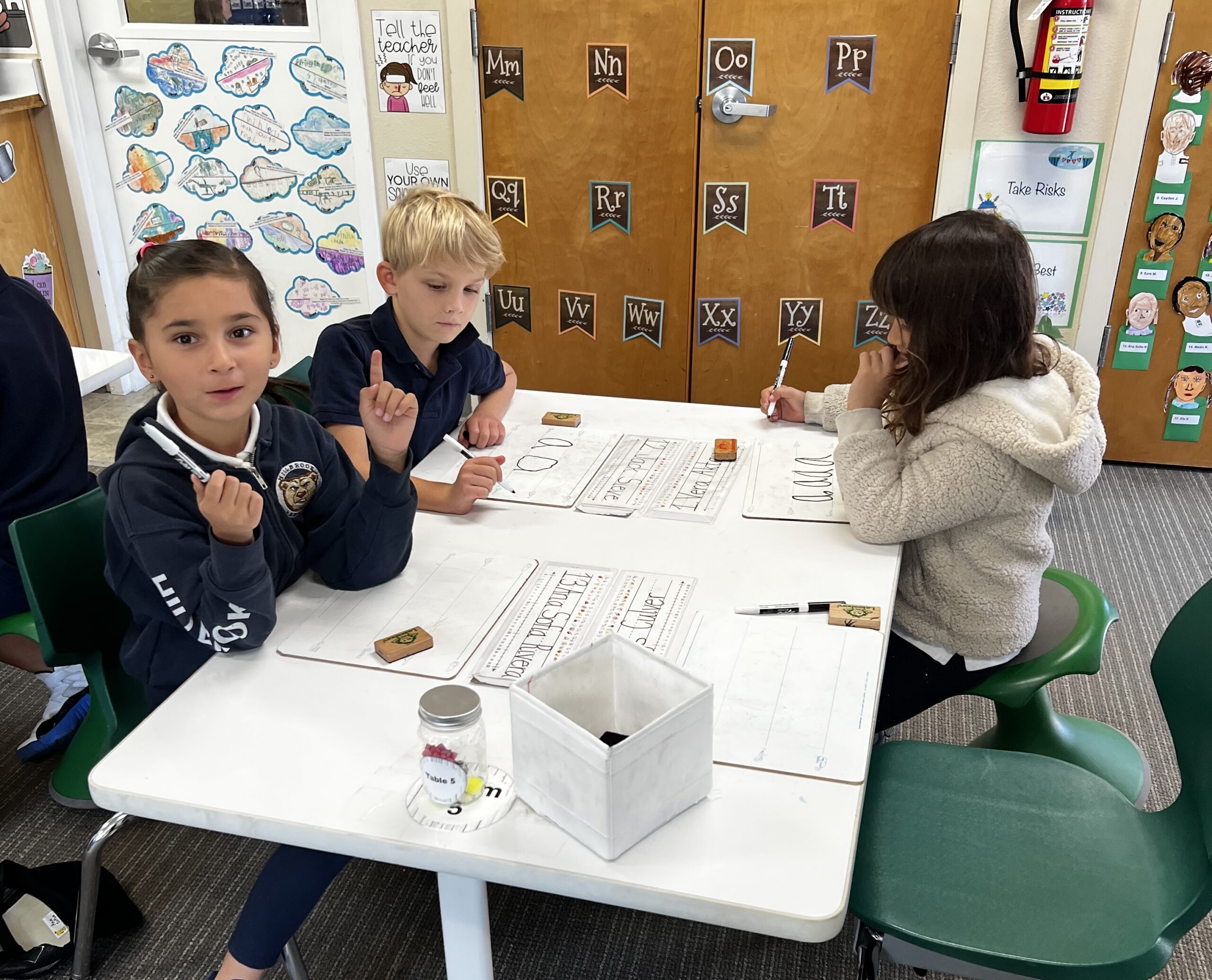“I can explain! An r-controlled vowel is like there’s an r behind a vowel and then it makes a different sound and it changes the sound sometimes. A-r makes ‘/ar/’ instead of ‘/ah/.’”
First Grade readers and spellers helped classmates last week with a newly learned syllable type: the r-controlled vowel. Taking turns in leadership roles, students also led classmates in drilling the many “glued” sounds (i.e. -onk, -ong) they have learned this year. Then they practiced reading and writing the words could, would, and should, as new trick words. They had a lively debate about whether “this” has to be a trick word if it contains a trick word (is) and gave examples to distinguish the homophones would and wood: “Actually, they are two letters different. It’s because w-o-u-l-d would be used in a sentence, like, that’s a question, and the other wood is like a material. From trees.”
As students help each other notice similarities, differences, rhymes, connections (“I have an r-controlled vowel in my name! I do!”), and previously learned rules, they build their own confidence and fluency as readers while also celebrating the joys of language and words at their own age and stage.

